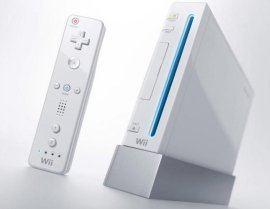 Nintendo is reportedly planning on cutting the price of its Wii video game console from $199 to $150 on May 15, according to tech blog Engadget.
Nintendo is reportedly planning on cutting the price of its Wii video game console from $199 to $150 on May 15, according to tech blog Engadget.
The Japanese company has ruled this product generation of consoles with a majority market share ever since it launched the innovative motion-sensing Wii controller and its system in 2006. Because of that popularity, Nintendo has been much slower to cut prices on its console in this generation.
Rivals Microsoft and Sony have been steadily gaining on the Wii in the past year or so, as the Wii shows its age. Microsoft has seen fast growth since it launched its Kinect motion-sensing system in November, and Sony has also seen growth since it launched its motion-sensing Move controller in September.
Michael Pachter, an analyst at Wedbush Morgan, said in February that all three console makers would have to cut their prices this year as demand starts to fade. Nintendo has played the pricing game masterfully in the past. It debuted the Wii at $249, much lower than the initial $599 price for the PlayStation 3 in 2006 and $399 in 2005 for the Xbox 360.
With a cheaper and more innovative console, Nintendo stole the No. 1 position from Sony. To date, Nintendo has sold around 86 million Wiis, compared to 53 million Xbox 360s and 49 million PS 3s. Nintendo has also dominated in handhelds, selling 147 million DS units versus 67 million PlayStation Portables. Nintendo saw rising profits as a result. As the growth slowed, Nintendo shaved $50 off the Wii’s price in September, 2009, following price cuts from Sony and Microsoft. Since then, the Wii hasn’t had a price cut.
But in the last year, Nintendo sold about 7 million Wiis in the U.S. in 2010, compared to 9 million in 2009 and 10 million in 2008. In February, Microsoft sold 535,000 Xbox 360s while Nintendo sold 454,000 Wiis. Nintendo hasn’t commented yet.
It’s natural for the console makers to cut prices over time. The machines are expensive at the outset since the designers cram as much new technology into them as they can. Sony and Microsoft did this so much that they sold their initial machines at a loss, hoping to make up for that with game sales. Nintendo, on the other hand, has usually priced its hardware to make a profit.
As Moore’s Law (the capacity of a chip doubles every two years) progresses, the console makers can produce the same chips in their machines for a lower cost. So they can reduce the number of parts inside the consoles and cut prices.



